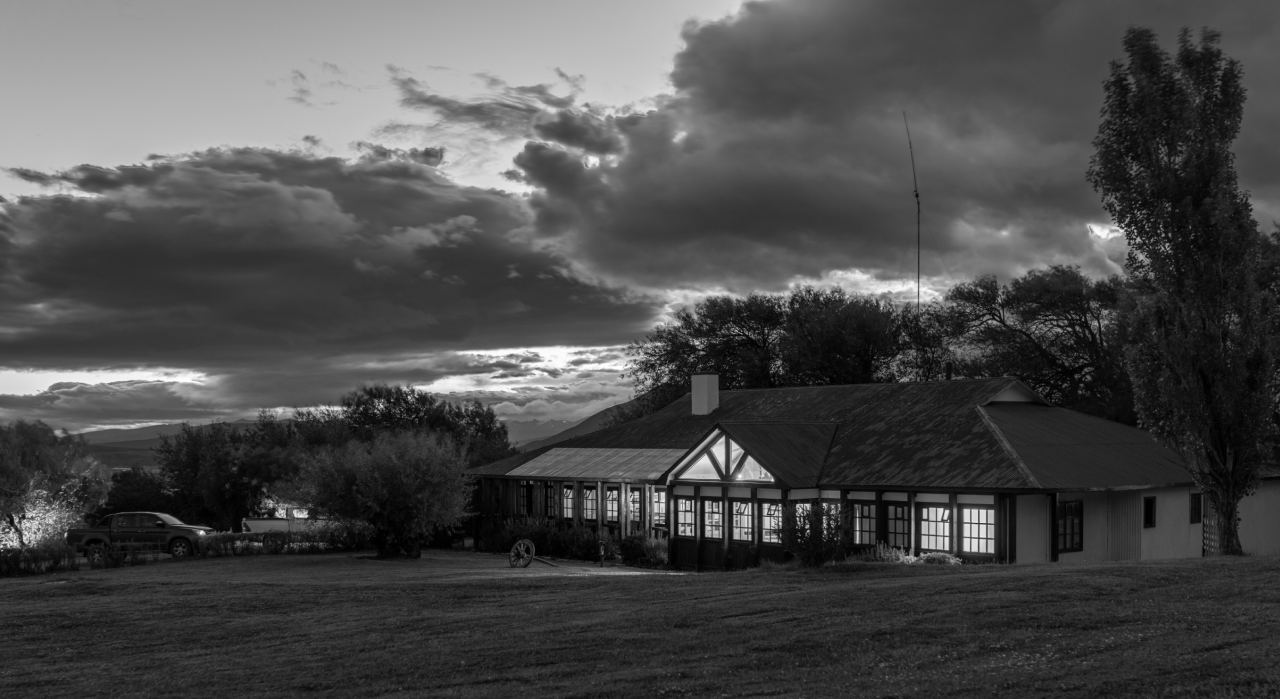
Wildlife
The wildlife of Cerro Guido is unique. Species such as the Puma, Condor, Guanacos and Skunks are some of the ones we can see in the Conservation Safari at our Estancia. However, today, the conservation of these species is endangered due to the historical conflict with the sheep industry, the main economic activity in the area. Cerro Guido Foundation was born as a conservation project, where its objective is to achieve the coexistence of the livestock industry and species such as the Puma, a feline that is persecuted for representing a constant enemy in sheep production.
For this reason, the Foundation has conducted research together with organizations dedicated to the conservation of endangered species such as Panthera.
Moreover, research is currently in progress to document and demonstrate the feeding routine of the puma that inhabits the Torres del Paine Biosphere Reserve.
In addition, it aims to demonstrate the efficiency of cattle handling and protection techniques through the implementation of guard dogs of Great Pyrenees and Maremma shepherd breeds, an activity carried out in the same fields of Estancia Cerro Guido.
The study is carried out through constant monitoring of the species, by means of GPS collars that will make it possible to geo-reference their movements in the area and the installation of trap cameras at strategic points to identify hot spots for puma sightings.
Currently, the study is in its second stage of execution, with collared pumas and the fields are being prepared for the livestock management experiment.

Protective Dogs: Great Pyrenees and Maremma
The protection dogs of the Great Pyrenees and Maremma breeds have been one of the greatest allies of the Region’s Species Conservation and Livestock Industry.
According to Mirko Utrovicich, tracker and supervisor of the protection dogs, these canines accompany the livestock by emanating their scents, which alerts the Puma, which, being an intelligent species that avoids conflict, moves away from the area.
Likewise, Pía Vergara, Executive Director of the Cerro Guido Foundation, adds that “These are dogs that are bred with sheep, are imprinted and become part of the sheep herds”. It is currently the most effective tool for managing the conflict between Species Conservation and the Livestock Industry, reducing the puma’s killing of sheep by 30%. However, it must be managed responsibly.
Estancia Cerro Guido covers an area of 100,000 hectares. Therefore, the guard dog alone will not be fully effective. In addition, these lands are geographically complicated due to the existence of, among other factors, ditches where the puma stalks.
Because of this, the human task consists of modifying livestock practices. For example, the reduction of the size of the land used for the industry, which means facilitating the work of the dog.

Camera traps
Camera traps are one of the technological tools that provide fundamental information to the ongoing investigation. They are small camouflaged cameras installed at strategic points for species tracking.
These devices make it possible to identify the “Hot Zones” where there are more sightings of pumas, which represent risk zones for leaving livestock.
Finally, camera traps are the instruments that allow trackers and researchers to actually track the movements of pumas and/or other species.
They play a crucial role in determining the habitable zones for humans and livestock. In a space as large as Estancia Cerro Guido’s fields, it is necessary to implement technology.

Foxlights poles
Foxlights are LED lights that are assembled on a pillar, installed in a strategic location. These lights will begin to illuminate at dusk and will emit a multicolored display.
These lights will be presented in random 360-degree patterns visible from a mile away (1.6 kilometers), emulating the movement of human torches, and will scare off pumas that threaten a population of 20,000 sheep at nearby Estancia Cerro Guido, just outside Torres del Paine National Park.
Nicolás Lagos, conservation advisor, commented that “Talking about success with deterrents to ranchers who have always killed pumas is not enough (…) With solid results we hope to begin to change attitudes”. Lagos is working in Estancia Cerro Guido on a study covering 100 hectares and has introduced the mentioned light posts as a non-lethal deterrent.

Conservation to Coexist
Since the Foundation and Estancia Cerro Guido have existed, their objective has been to achieve the coexistence of the Sheep Industry, the main economic activity in the area, and predatory species such as the Puma.
“The non-lethal measures are driving the local inhabitants (pumas) to return to natural food sources, such as guanacos, rheas and hares, which is better for the ecosystem,” says Vergara.
The idea of generating a coexistence was born in 2013, when the owners of the Estancia, the Simunovic and Matetic families, noticed an increase in the demand for “Puma Tourism” and wanted to align it with the increase in conservationist efforts that occurred from the 2000s onwards.
Despite being a protected species in Chile since the 1980s, they are still hunted on farmland in Torres del Paine by so-called leoneros, Patagonian hunters with dogs. There are no formal estimates of how many pumas are killed, but clandestine hunts are common knowledge.
This is the main objective of the Cerro Guido Foundation. To achieve coexistence, in such a way that the persecution of unique species such as the Puma, which represent a treasure, both for the inhabitants of the southernmost area of the planet, as well as for the country, can be stopped.




